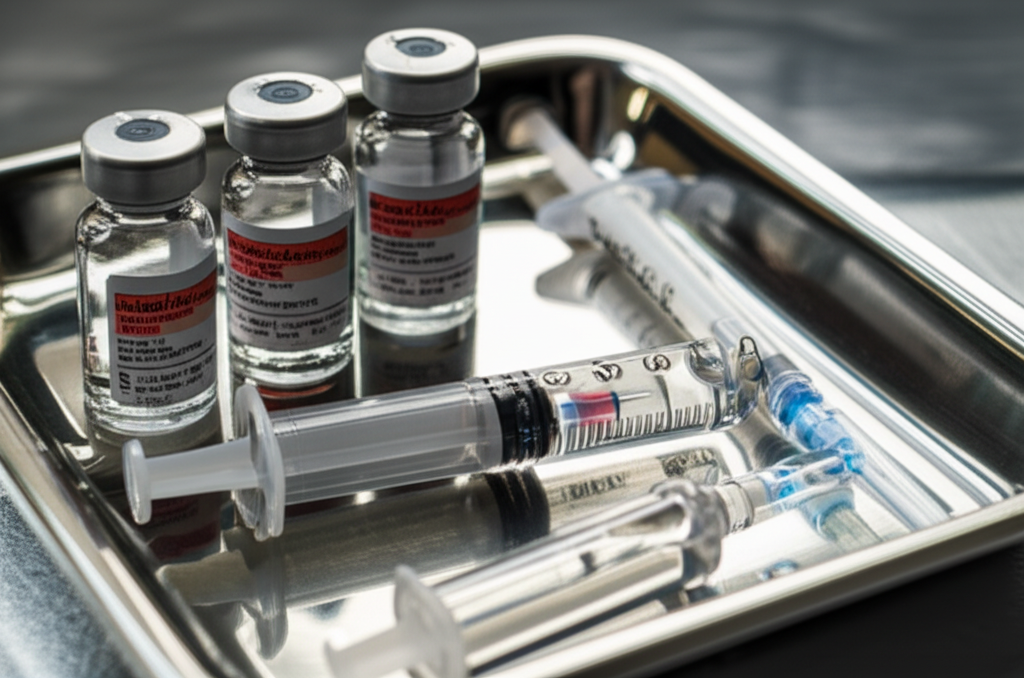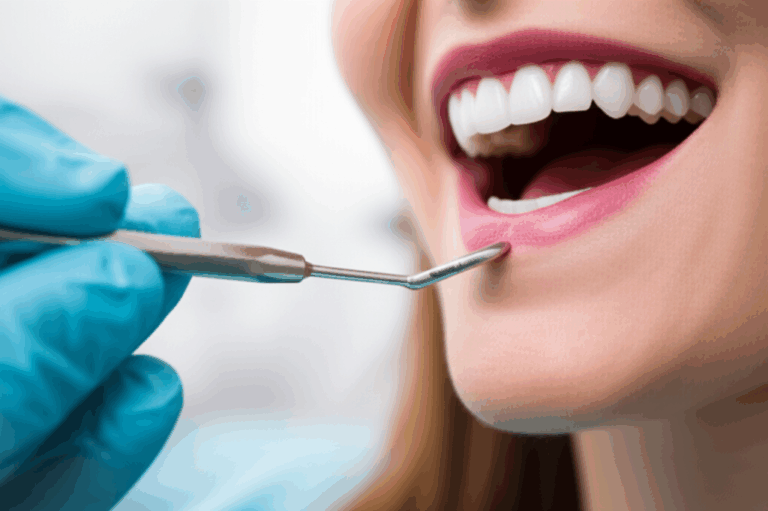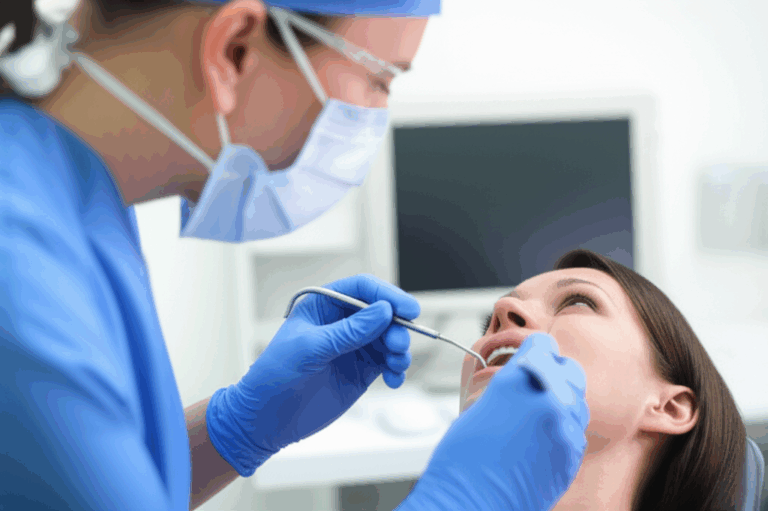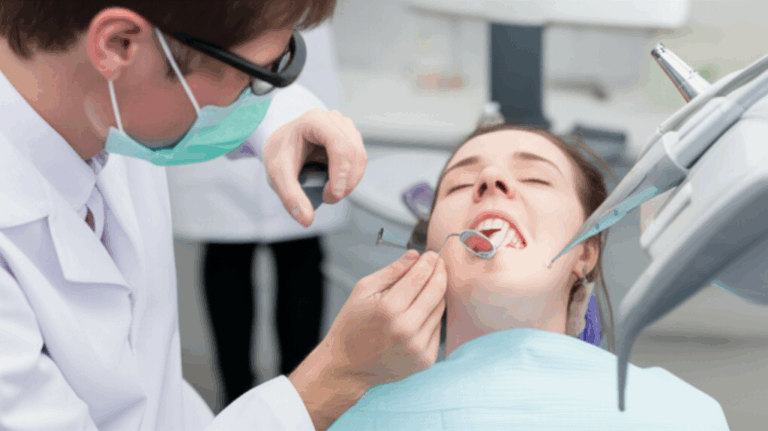
What Anaesthetic Do Dentists Use? Your Complete Guide to Pain-Free Dental Visits
If you’re nervous about your next dental visit, you’re not alone. Ever asked yourself, “What anaesthetic do dentists use, and will it really keep me from feeling pain?” This article breaks it all down in plain English. We’ll cover the main numbing drugs, how they work, why you’ll feel okay, and simple tips for easing nerves. Read on—you’ll see that a pain-free dental visit is right there for you!
Table of Contents
Introduction: Why Dental Anaesthesia Matters
Let’s be real—nobody looks forward to sitting in the dentist’s chair with their mouth wide open while tools make noise. Years ago, dental work often hurt a lot. But thanks to new dental anaesthetics, you really don’t need to worry about pain anymore. Dentists want you to be safe and feel okay, with no pain.
Pretty much all dental work—from fillings to root canals—uses some numbing. It’s usually a shot that only makes a small part of your mouth numb. If you need even more help for bigger work, sometimes you get medicine to help you chill out or even sleep through it. Modern dentists have the right stuff to help anybody—even if you’re really nervous.
What Is Local Anaesthesia and How Does It Work?
Dentists use local anaesthetics to “take away the feeling” in a spot in your mouth. These medicines stop nerves from sending pain signals to your brain. When your mouth is numb, you only feel a little pressure, not pain!
Think of it like a security guard at a door. Local anaesthetics are like that guard—the nerve can’t get the pain message to your brain. You’re awake, can talk, and know what’s going on. But you won’t feel pain from the work.
Where does the numbness happen? Dentists aim the numb shot near the tooth or gum they’re working on. For one tooth or a small part, they put the shot close. For bigger jobs, like your whole lower jaw, they’ll numb a big nerve for that side—this is a nerve block.
Which Local Anaesthetics Do Dentists Use Today?
When most people think of dental work, they think of Novocaine. But let’s look at what dentists use now:
Most used local anaesthetics:
| Name | Brand Name(s) | Main Use | Avg. Numb Time |
|---|---|---|---|
| Lidocaine | Xylocaine | Most dental work | 60-90 min |
| Articaine | Septocaine, etc. | For tougher spots | 60-75 min |
| Mepivacaine | Carbocaine | Based on patient | 30-60 min |
| Prilocaine | Citanest | If you’re sensitive | 40-60 min |
| Bupivacaine | Marcaine | For long treatments | 90-180 min |
Lidocaine is used in more than half of all dental visits everywhere. It works fast and is safe for almost everyone. Articaine is popular too, especially for pulling teeth or root canals, because it gets into bone so well.
Think of these drugs as a team. They each have their own skill. Your dentist picks the one that’s best for you and the work you need.
Why Don’t Dentists Use Novocaine Much Anymore?
Let’s clear this up: Novocaine (or procaine) isn’t used much now. Back in the old days—like when your grandma was a kid—it was almost the only option. But dentists found better and safer drugs later.
Why they stopped using it:
- Novocaine could cause allergy problems for some.
- It didn’t numb you long enough.
- Newer drugs like Lidocaine work faster, last just the right time, and don’t mess with your heart or blood pressure as much.
So if your dentist says, “I’m using Lidocaine, not Novocaine,” that’s good! You’re getting the safest, most up-to-date medicine.
What’s the Role of Vasoconstrictors Like Epinephrine?
Here’s a secret part: a lot of dental numbing drugs are mixed with something called a vasoconstrictor—usually epinephrine. Epinephrine works like a stop sign for your blood vessels. It tells them to “hold on,” and that keeps the numbing medicine in your gums longer.
Why this matters:
- Your mouth stays numb longer, so you feel no pain even with big dental jobs.
- You bleed less, which lets the dentist see and work easier.
- Less medicine sneaks into your blood and causes problems.
Some people can’t have epinephrine (like with some heart or thyroid issues). Dentists know to skip it in those cases, using “plain” numbing medicine. Always tell your dentist about your health, just in case!
How Do Dentists Give Numbing Shots?
So, how does the numb stuff get into your tooth area? Almost always, your dentist uses a tiny thin needle. You might feel a little pinch or slight pressure, but it’s over fast.
Dentists make shots easier by:
- Numbing gels: They rub a special cream on your gum first so you don’t feel much from the needle.
- Going slow: They put the medicine in nice and slow—this helps a lot.
- The Wand: Some offices use a special tool called “The Wand.” It’s high-tech, feels soft, and you barely feel the shot.
I’ve had these shots, too—I get worried! But numbing gel and a calm dentist make me relax right away.
What If I’m Scared of Needles or Pain?
Lots of people worry about the little pinch, or even the whole dentist trip. That fear can make you skip appointments. You’re not alone—about 1 in 4 people have dental anxiety, and some avoid checkups for years.
But here’s the thing: Avoiding the dentist means more problems. Cavities get big, teeth might get infected, and waiting just makes the job harder and more expensive.
So, talk to your dentist. Let them know you’re scared. Dentists learn how to help you feel better. They can:
- Use extra numbing gel and gentle shots,
- Offer stuff to distract you (music, TV, chatting),
- Even use special numbing patches (for very small jobs),
- Or give sedation if needed.
Still nervous? Remember: A good dentist wants you to feel calm and okay.
Sedation Dentistry: Options for Extra Anxiety or Tough Procedures
Sometimes, regular numbing isn’t enough—maybe the work is long, or you get super nervous. That’s where sedation dentistry helps. Here are your choices:
Nitrous Oxide (Laughing Gas)
This is a soft-smelling gas you breathe in your nose. In a few minutes, you’ll feel chill, maybe even a bit giggly. You stay awake and can answer questions, but you won’t care about the noise or what’s happening. Best part—it wears off fast and you can drive home.
Oral Sedation
With oral sedation, you swallow a small pill (like Valium or Triazolam) before the dentist starts. You might feel sleepy or so calm you hardly remember the visit. This is good for long or hard treatments.
IV Sedation
For big jobs—like taking out wisdom teeth or lots of work—sometimes you get medicine in a vein. A trained helper watches over you. You’ll be very sleepy, maybe not remember much. Someone needs to drive you home.
General Anaesthesia
Now and then, you have to be totally “asleep,” like for mouth surgery or for kids who can’t keep still. This is usually in a hospital or big specialist office, with a trained anaesthesiologist.
If you’re curious about new ways to relax during treatment, check out how some implant dental laboratory clinics use sedation to help with bigger treatments.
Who Decides Which Anaesthetic Is Best for Me?
Your dentist is like your coach—they make the call by thinking about:
- The dental job you need (cleaning or a big pull?),
- Your health—things like allergies, heart or blood sugar problems, or any special needs,
- If you’re a kid or adult,
- Your pain tolerance,
- How you handled anaesthetic before.
Dentists want you safe. They’ll ask about health and medicine you take. If you’re pregnant, breastfeeding, or special in any way, tell them—they’ll use what’s best for you.
If you want to know more about gentle, digital impressions, look up a digital dental lab for the newest, most comfortable tech.
What Are the Risks and Side Effects?
“Is dental anaesthetic safe?” The short answer—yes, for almost everyone! Big problems are really rare. Most side effects are small, like:
- Numbing in lips, tongue, cheek, or jaw for a while,
- Puffy or bruised spot where the needle went,
- Trouble talking, eating, or drinking for an hour or so,
- Accidentally biting your lip or tongue (be extra careful—kids especially!),
- Some people feel their heart beat faster for a little bit—usually just from epinephrine and goes away soon.
Real allergies are very rare. If you get a rash, can’t breathe, or your face swells up after a dental shot, tell your dentist fast—they know what to do.
If you’re working with crowns or bridges, some crown and bridge lab teams work hard to keep you safe and comfy each step.
What Should I Expect Before, During, and After Numbing?
Before: Your dentist will ask about your health and any worries. They might put on a little numbing cream on your gum for the shot.
During: You’ll feel a tiny pinch, and maybe a little sting or warmth, but it goes away pretty fast. Most people say it’s a lot less bad than they feared.
When the numbness kicks in, your mouth might feel tingly or fat—like you just got back from the dentist! This is normal. You’ll feel some pushing and pulling, but no pain.
After: Numbness lasts from 30 minutes to about three hours (based on the drug and the work). Until you get feeling back:
- Don’t eat chewy stuff or drink hot drinks (you might bite or burn yourself).
- Watch kids—they like to chew or poke their numb lips.
- If you want the numbness gone faster, ask your dentist about OraVerse—it can help the feeling come back sooner for many people.
How Long Does Numbness Last—and Can You Make It Go Away Faster?
Usually, numbness from dental anaesthetics lasts 1 to 3 hours. You might feel like your lip is fat when you try to talk, grin, or drink. The exact time depends on:
- Which numbing drug you got
- Where the dentist put it
- How long the job took
Want it to wear off sooner? Some dentists use a “reversal” drug, like OraVerse. This helps feeling come back in half the time. Not all offices have this, but it’s worth asking if your mouth wakes up slow.
Here’s a handy chart:
| Anaesthetic | Avg. Numbness Time |
|---|---|
| Lidocaine | 1-1.5 hrs |
| Articaine | 1-1.25 hrs |
| Mepivacaine | 0.5-1 hr |
| Bupivacaine | 2-3 hrs |
FAQs: Your Top Dental Anaesthetic Questions Answered
Does the dental shot hurt?
Mostly, just a quick pinch or sting. Numbing gel makes it much easier!
How long will I be numb?
Most people are numb from 1 to 3 hours, depending on the drug and where it’s given.
Can you eat or drink afterward?
Wait for feeling to come back, or only have cool drinks if you really need to. Careful you don’t bite your lip!
What if I’m pregnant or breastfeeding?
Most local anaesthetics are okay, but always tell your dentist so they can pick what’s safest.
I had anaesthetic before and it didn’t work—now what?
Let your dentist know. Sometimes it’s your nerve setup or an infection, but they have ways and other drugs to try.
Can I drive after my visit?
Yes, if you only had numbing shots or laughing gas. If you had a sedative pill or IV, have someone drive you.
Why did my dentist use Lidocaine instead of Novocaine?
Lidocaine is newer, safer, and longer-lasting, and is what almost every dentist uses now!
For more in-depth dentist tips, find a useful dental practical guide for answers.
Bullet Point Summary: Main Things to Remember
- Dental anaesthetics keep you pain-free—they’re safe, easy, and modern.
- Lidocaine, Articaine, and Mepivacaine are the main drugs now—not Novocaine.
- Dentists may add epinephrine to help numbing last longer and cut bleeding.
- Worried about pain? Numbing gels, gentle shots, and new tools like “The Wand” help a lot.
- Sedation choices (laughing gas, pills, IV) are there for extra comfort or nerves.
- Most people get mild side effects like numb lips, with rare allergies.
- Honest talks with your dentist keep you safe and comfy—always share health history and worries.
- Adults and kids must be careful with numb lips after—you don’t want to chew or hurt them!
- Ask about new tools and quicker recovery options to feel normal faster.
- You don’t need to be scared—modern dentists want you smiling and feeling good!
Reviewed by Dr. Joe Dental, DDS – Board Certified, Expert in Patient Comfort and Modern Dental Techniques.








